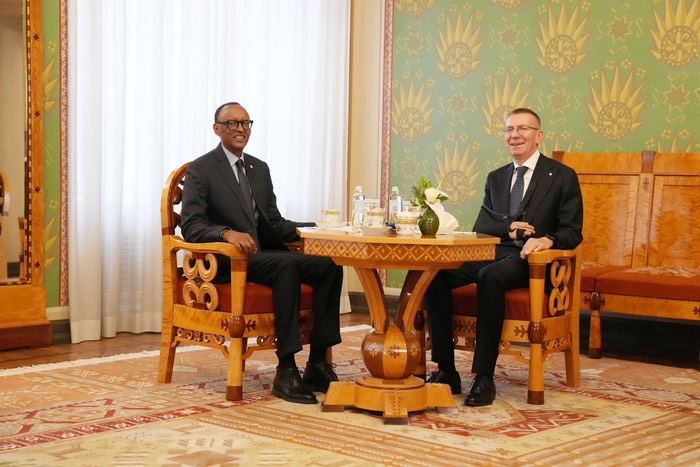
This morning in Latvia’s capital Riga, President Kagame was received by President Edgars Rinkēvičs at the Riga Castle where they held tête-a-tête discussions before being joined by members of both delegations for bilateral discussions.
The two Presidents addressed a joint press conference after their closed-door meeting.
“Welcome, Your Excellency President Kagame, to Riga. Very much looking forward to develop strong political and trade cooperation between Latvia and Rwanda. It is also important to work together to uphold principles of international law both globally and regionally”, Latvian President Edgars Rinkēvičs said.
“Following my discussion with the President, and between our delegations, it is evident that Rwanda and Latvia share strong bonds of friendship. We were deeply moved by our visit yesterday to the Museum of the Occupation of Latvia. This exhibit holds a universal message about the protection of rights and freedoms. The purpose of this visit is to explore new opportunities for the mutual benefit of our people. There is already a growing interest in the field of sustainable agriculture. What also unites Rwanda and Latvia is a common understanding that we can no longer do business as usual. We need a multilateral system that is more fit-for-purpose, and which treats everyone equally. We also need to prioritize growth areas, such as information technology. Ultimately, the mindset we have is to work together, to find solutions to our unique set of challenges, ” President Kagame said during the Joint Press Conference with President Edgars Rinkēvičs.
Rwanda’s President Paul Kagame began yesterday his three day Official Visit to Latvia with a tour of the Museum of the Occupation of Latvia.
During the visit, a commemorative plaque dedicated to the victims of the 1994 Rwandan genocide against the Tutsi will be unveiled at the National Library of Latvia. (“The Castle of Light”).
This will be the first genocide memorial erected in the Baltic States and in Eastern Europe. (End)
